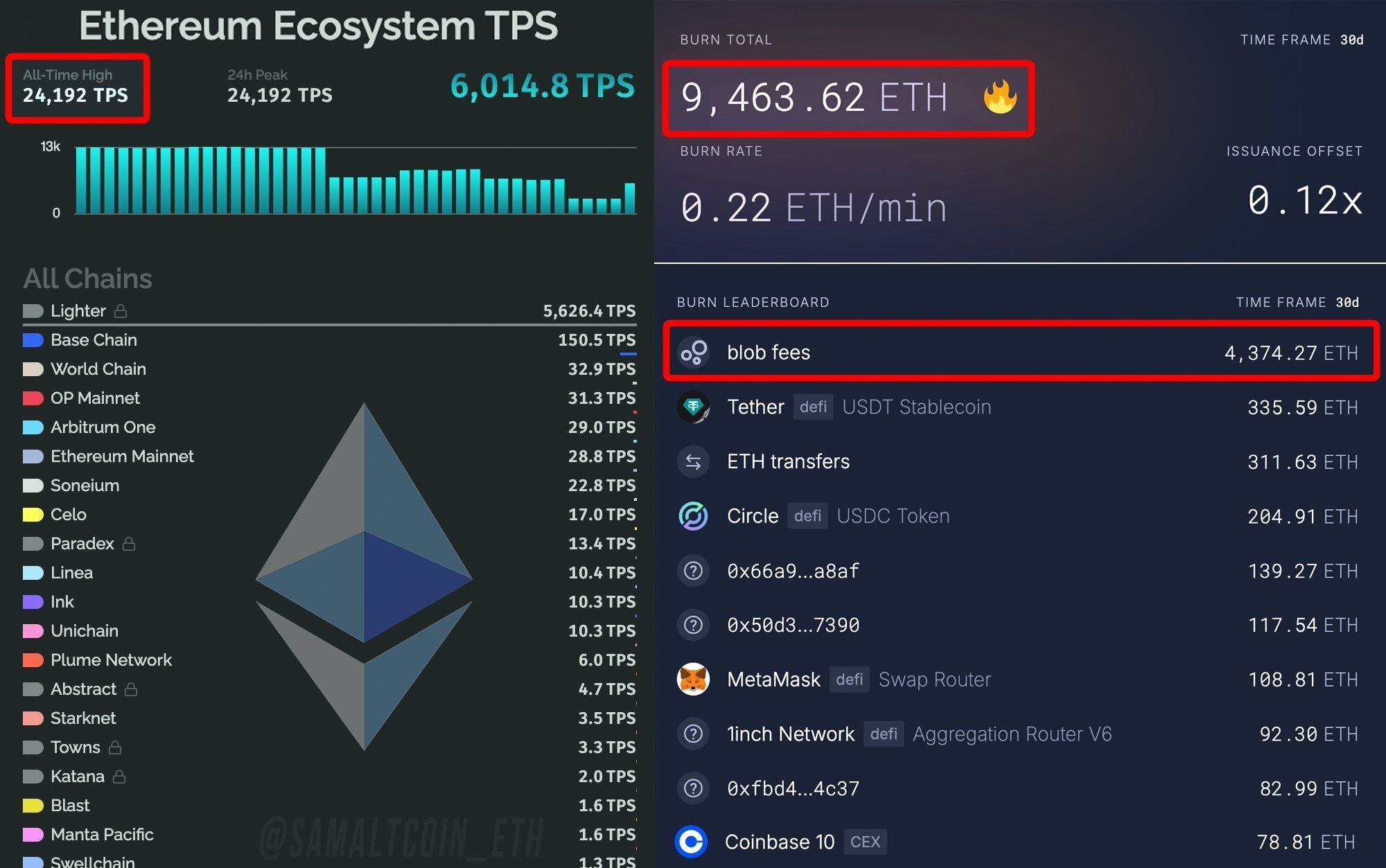Ethereum achieved the historic milestone of processing 24,192 transactions per second, the highest record in network history.
According to data compiled by analytics platform Growthepie, this record likely included Lighter. This protocol is a layer 2 solution that recently joined the Ethereum scaling ecosystem.
Lighter alone handles around 4,000 TPS, much more than Base Chain, which typically handles 100-200 TPS. As a result, this surge highlights the impact of layer 2 platforms. In particular, these solutions extend Ethereum’s scalability and achieve performance levels that could not be reached with the base layer alone.
Waidmann said that “the blob is scaling L2 at warp speed,” indicating that increased user activity across Layer 2 can directly lead to more ETH being burned, reducing supply and impacting long-term price trends.

Community reaction
Ethereum co-founder Vitalik Buterin celebrated the development in a tweet. “Ethereum is expanding,” he wrote, highlighting ways the network can handle increased transaction volumes more efficiently.
Ryan Sean Adams, voice of the Bankless podcast, highlighted that Layer 2 solutions currently offer a 200x scaling factor for Ethereum. He attributes this progress to the increased adoption of zero-knowledge proofs (ZK technology).
Based on this progress, he predicted that the network could soon reach 100,000 TPS and eventually 1 million TPS.
Pectra and Dencun upgrades to enhance Layer 2 growth
In particular, Ethereum’s performance improvements are rooted in recent Pectra and Dencun upgrades that significantly enhanced Layer 2 (L2) network throughput and efficiency. These updates enabled faster and cheaper transactions, laying the foundation for Ethereum’s record-breaking performance.
These upgrades enhance Ethereum’s multi-tier scaling model by enabling the L2 network to process transactions with unprecedented speed and efficiency through data processing optimization and support for zero-knowledge technology.
Although Lighter is driving much of Ethereum’s record performance, the platform has faced several network outages since its launch on October 1. This turmoil has led to comparisons to Solana’s earlier instability.
After the October 28 outage, Reiter’s team compensated 3,900 wallets with $774,872 in USDC. Despite these challenges, writers remain central to Ethereum’s recent scaling success.
Discussion over Ethereum’s value capture
Meanwhile, the rise of Layer 2 poses strategic questions for Ethereum’s long-term economic model. ₿Rezso Schmiedt, founding partner at RRR Capital, wondered where the value is generated on Ethereum’s mainnet if the layer 2 network collects most of the transaction fees.
Nevertheless, some community members argue that new mechanisms such as toll sharing, MEV capture, and protocol-level integration are needed to ensure that Layer 1 continues to economically benefit from Layer 2 growth.


